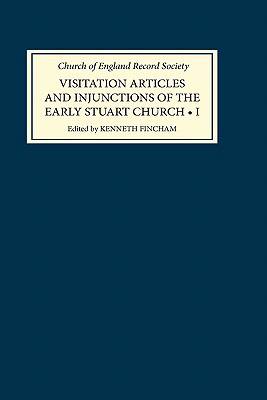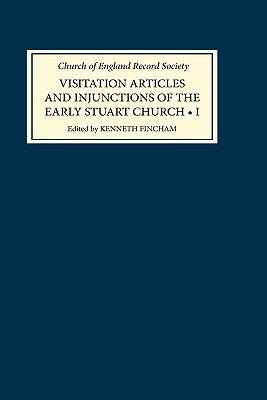
Je cadeautjes zeker op tijd in huis hebben voor de feestdagen? Kom langs in onze winkels en vind het perfecte geschenk!
- Afhalen na 1 uur in een winkel met voorraad
- Gratis thuislevering in België vanaf € 30
- Ruim aanbod met 7 miljoen producten
Je cadeautjes zeker op tijd in huis hebben voor de feestdagen? Kom langs in onze winkels en vind het perfecte geschenk!
- Afhalen na 1 uur in een winkel met voorraad
- Gratis thuislevering in België vanaf € 30
- Ruim aanbod met 7 miljoen producten
Zoeken
Visitation Articles and Injunctions of the Early Stuart Church: I. 1603-25
€ 136,95
+ 273 punten
Omschrijving
`An invaluable source for ecclesiastical history... promises to be a highly important record series.' ENGLISH HISTORICAL REVIEW This is the first of two volumes which reproduce manuscript and printed documents for the years 1603-1642. The articles issued by archbishops, bishops, archdeacons and others exercising ecclesiastical jurisdiction have been frequently used by historians as evidence of the priorities and concerns of church government, but until now there has been no systematic examination of the structure and contents of articles, nor the relationship between sets issued bydifferent archbishops, bishops or archdeacons. These two volumes attempt to fill this gap.
Volume 1, centring on the Church of James I, contains no less than sixty-six sets of articles, printed either in full or in collated form and includes injunctions or charges issued duringor after visitations. Volume 2 extends the same treatment to the Caroline Church up to the Civil War.
KENNETH FINCHAM is lecturer in history at the University of Kent at Canterbury.
Volume 1, centring on the Church of James I, contains no less than sixty-six sets of articles, printed either in full or in collated form and includes injunctions or charges issued duringor after visitations. Volume 2 extends the same treatment to the Caroline Church up to the Civil War.
KENNETH FINCHAM is lecturer in history at the University of Kent at Canterbury.
Specificaties
Betrokkenen
- Uitgeverij:
Inhoud
- Aantal bladzijden:
- 253
- Taal:
- Engels
- Reeks:
- Reeksnummer:
- nr. 1
Eigenschappen
- Productcode (EAN):
- 9780851153537
- Verschijningsdatum:
- 1/03/1994
- Uitvoering:
- Hardcover
- Formaat:
- Genaaid
- Afmetingen:
- 164 mm x 240 mm
- Gewicht:
- 530 g

Alleen bij Standaard Boekhandel
+ 273 punten op je klantenkaart van Standaard Boekhandel
Beoordelingen
We publiceren alleen reviews die voldoen aan de voorwaarden voor reviews. Bekijk onze voorwaarden voor reviews.








